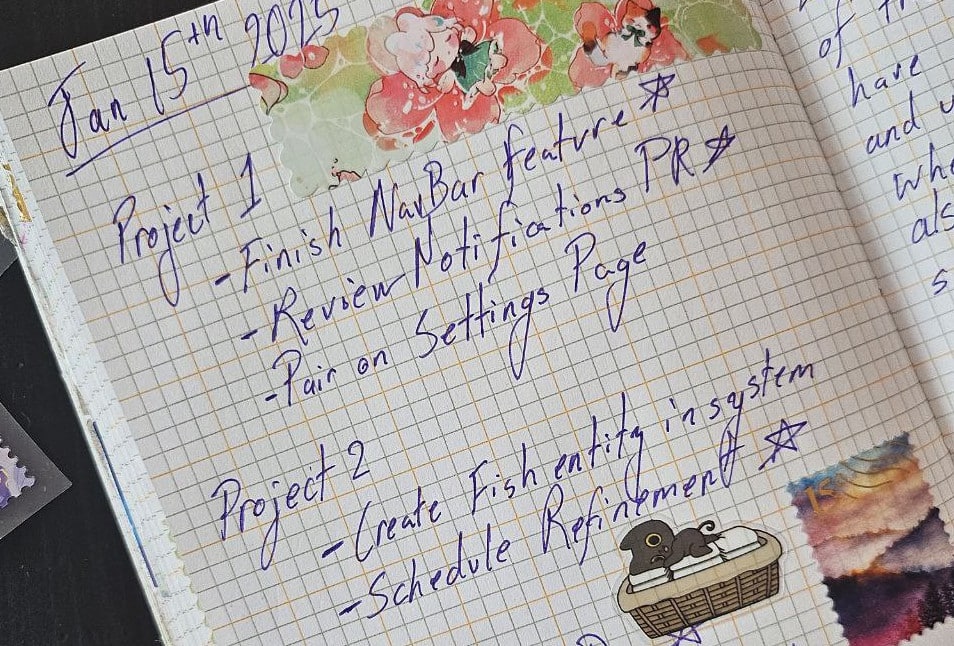I have often dreamed of a version of myself that has less going on. The fact of the matter is as I move through life, more and more opportunities arise. I am no stranger to biting off more than is reasonable to chew. However, I’m also blessed that the opportunities I take are ones I enjoy, so I have to find some way to make them all work.
All throughout life, two pieces of advice for my scattered brain were thrown at me:
- Keep a planner (we will not be entertaining this today)
- Keep a journal
And, I tried planners at many points, but found my days were more fluid than a planner could account for. Journaling, on the other hand, always seemed daunting and high pressure. I was scared to open one up. This year, however, I decided to take the leap, and through some tuning I’ve found it profoundly useful for planning, tracking, and organizing the everything, everywhere, all at once.
But it’s not like the journal magically made this happen for me. Through my own brain and others’, I’ve found that a couple specific strategies get my mind moving more effectively when I journal.
Starting Simple: Task Categories
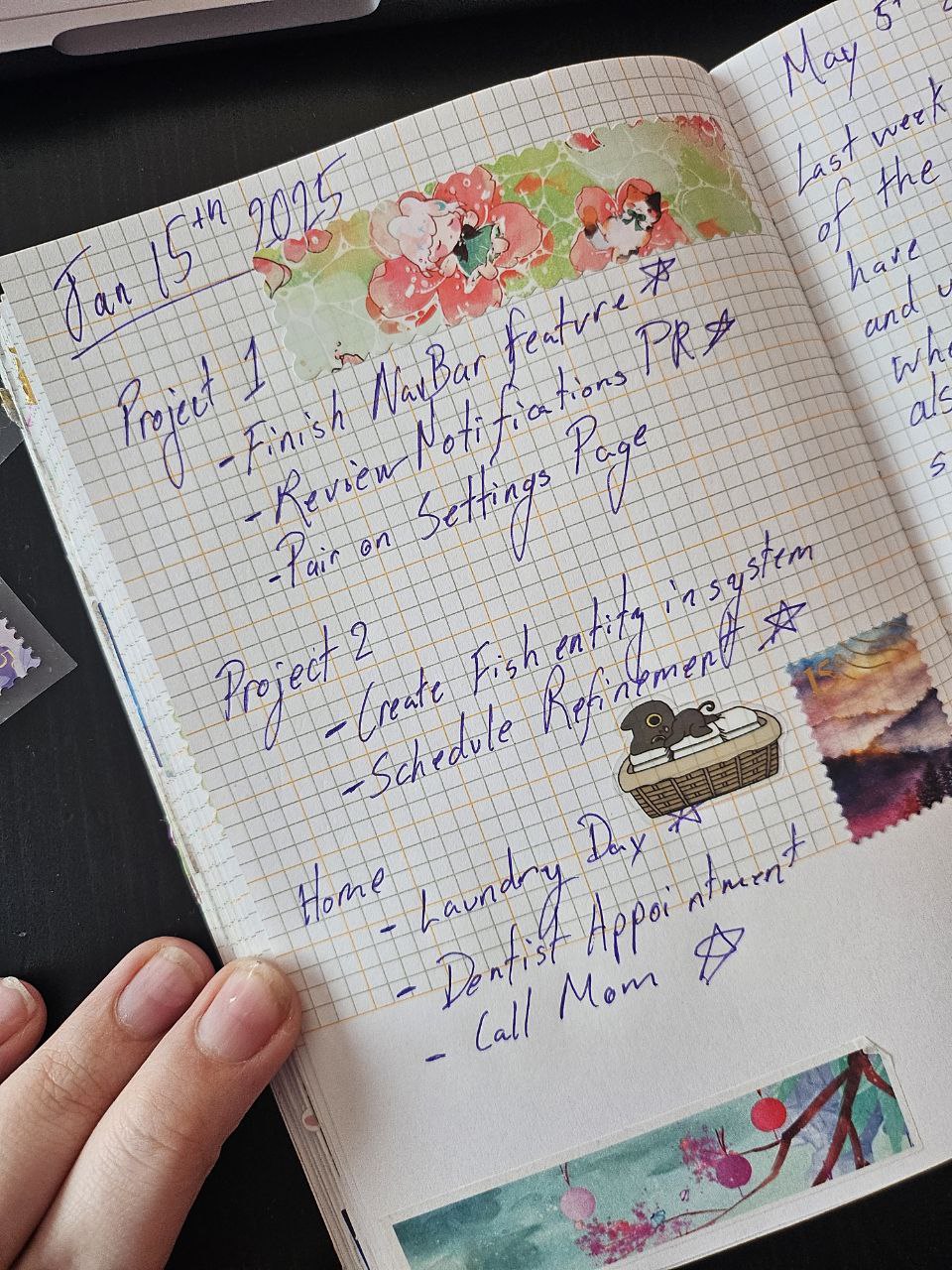
There’s nothing I love more than a sorting activity. The concept of putting things in their proper bucket is a snappy way to get the whirlwind sorted. The idea is pretty simple:
Step 1 – Identification
There are a couple of ways to categorize tasks, and how you decide to do so is normally decided by the reason your workload has you scattered. Here are the buckets I’ve used:
- The project the task belongs to (could be specific work items)
- I use this when I’m pulled in many discrete, different directions. Maybe I have time sensitive errands, multiple workstreams at work, and a party I’m planning. These can all likely have sub-categories, but the fact remains the same: getting them all separated can prevent your brain from jumping ship from the other tasks at hand. They now have their place, and will get your energy when you shift to that workstream.
- The nature of the task
- When there are a lot of discrete but common-ish tasks within your workloads, it can be helpful to categorize by type of task. Perhaps you have emails to write for two different clients, features for those same two clients, some pull requests to review from your teammates, and internal administrative tasks for logging that all work. Well, there are now four categories of tasks: communications, development, peer review, and time tracking. This can help decide where to start more clearly – some tasks, like communication and time tracking, may make more sense to do together, whereas development and peer review may be tasks you need to strategize differently. It just helps to see it on paper.
- The difficulty level to complete
- Similar but different from the last categorization is difficulty. Short, easy wins can be helpful when you hit a mental block on larger work. Knowing what you have available to pull out of your back pocket helps manage your time throughout the day much more effectively. Nothing too difficult here, pick a scale (I just use easy, medium, hard, but time to complete may be helpful also) and run with it.
Step 2 – Categorize
Write everything in the buckets you’ve made! Circle the items you feel need circling! Attach dates, stakeholders, anything you want to each line item. The world is your oyster here, but once you’ve set the stage for yourself, put all the tasks you’ve got into the buckets. You’ll find yourself starting to think about a plan of attack as you do this, which is exactly what we want to unblock.
A little more detail: The History Lesson
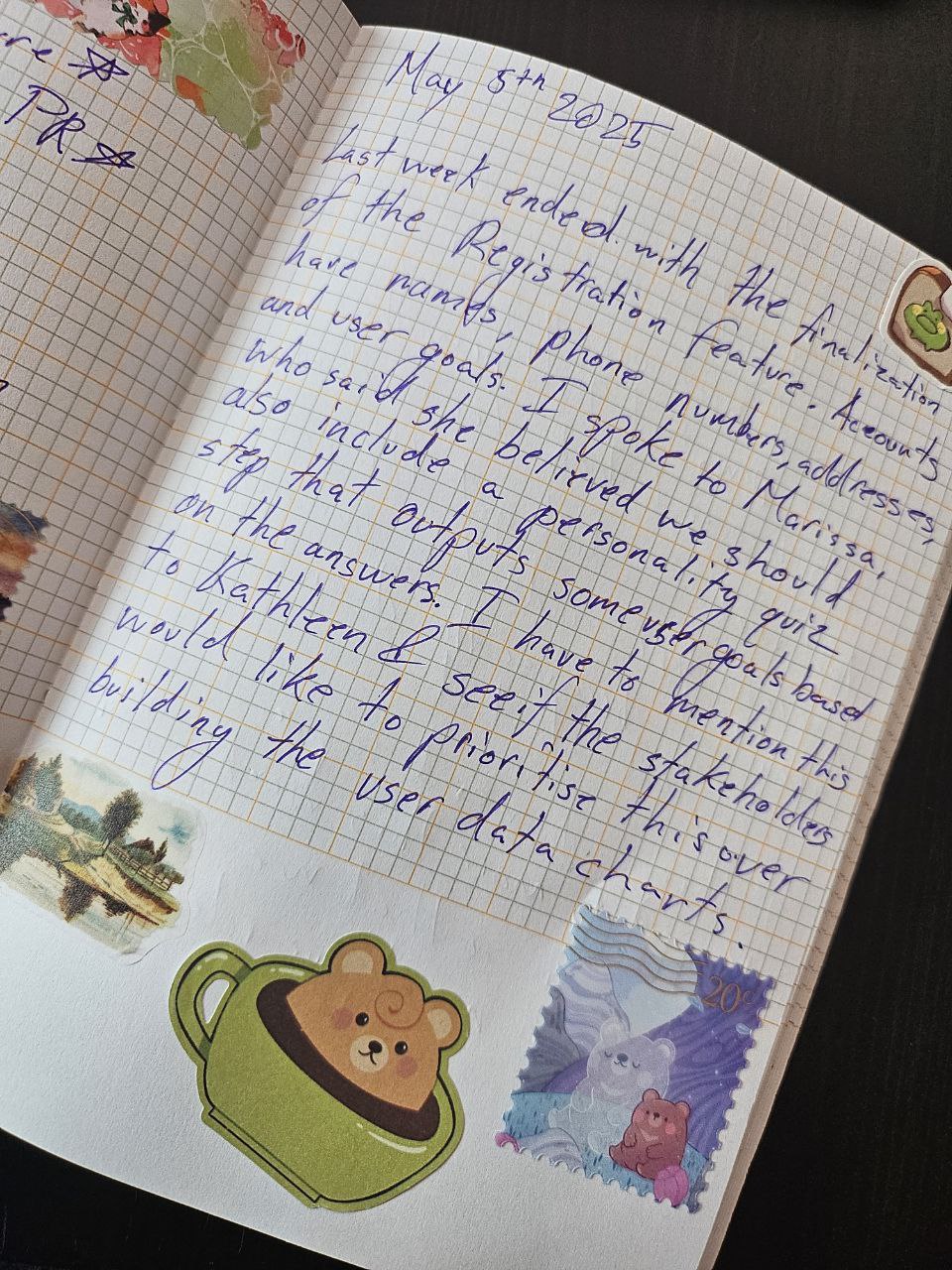
Tasks don’t typically appear neatly stacked on your desk. They’re the result of actioning on workflows through the passage of time. When I step away from my computer, returning the following day and trying to remember with no visuals can be such a mess. Spending some time recording what happened yesterday, in as much or little detail as helpful, can help both set your intentions for the day and decide priority.
I like to make sure I recall
- Tasks I did complete, along with any follow up tasks that came from them
- Tasks I worked on, but didn’t close, and what’s left to do on them
- Conversations that held important information or opinions about the work at hand
- Any difficulties I had the previous day
- Any interruptions I had the previous day
By removing the reliance on your memory, you can get a much better understanding of where you are in relation to what you have to complete.
A little more intense: The Brain Dump
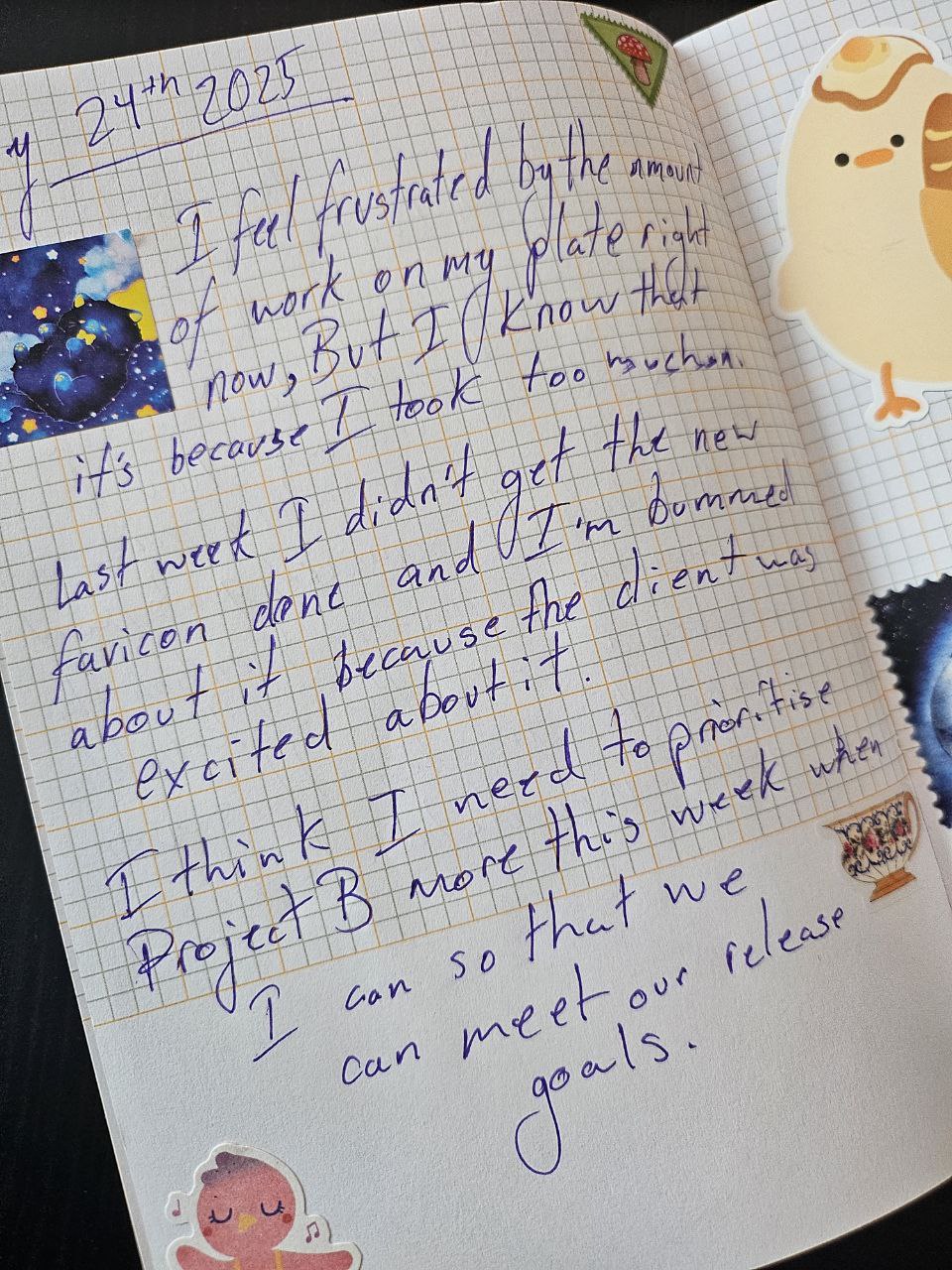
Brain dumps can take a lot of energy because they allow room for rumination on tasks, worries, and pressures. However, if racing thoughts and feelings are what’s blocking you from sorting through the muck, it’s best to just get it out of your head.
By their nature, brain dumps are a whatever-you-want type of scenario, but that can be overwhelming. Simplicity is key here.
Start with statements like
- I felt ______ when ________ occurred
- I think _______ is a higher priority than _______ .
- I didn’t get ______ done and ______ is how I’m feeling about it.
- I don’t like {insert task} but maybe I can do ______ to make it happen faster
Simple thoughts get the brain going and pressure you not to complicate things further. Once you find something that gets your thoughts out, write literally whatever you want. The goal here is to remove emotions or frustrations that are causing scattered-ness around the tasks at hand in as quick a way as possible. Journaling is just for you, so policing your thoughts here isn’t helpful. Just get them out to a point where you can move on.
Bonus: Fun Stickers!!
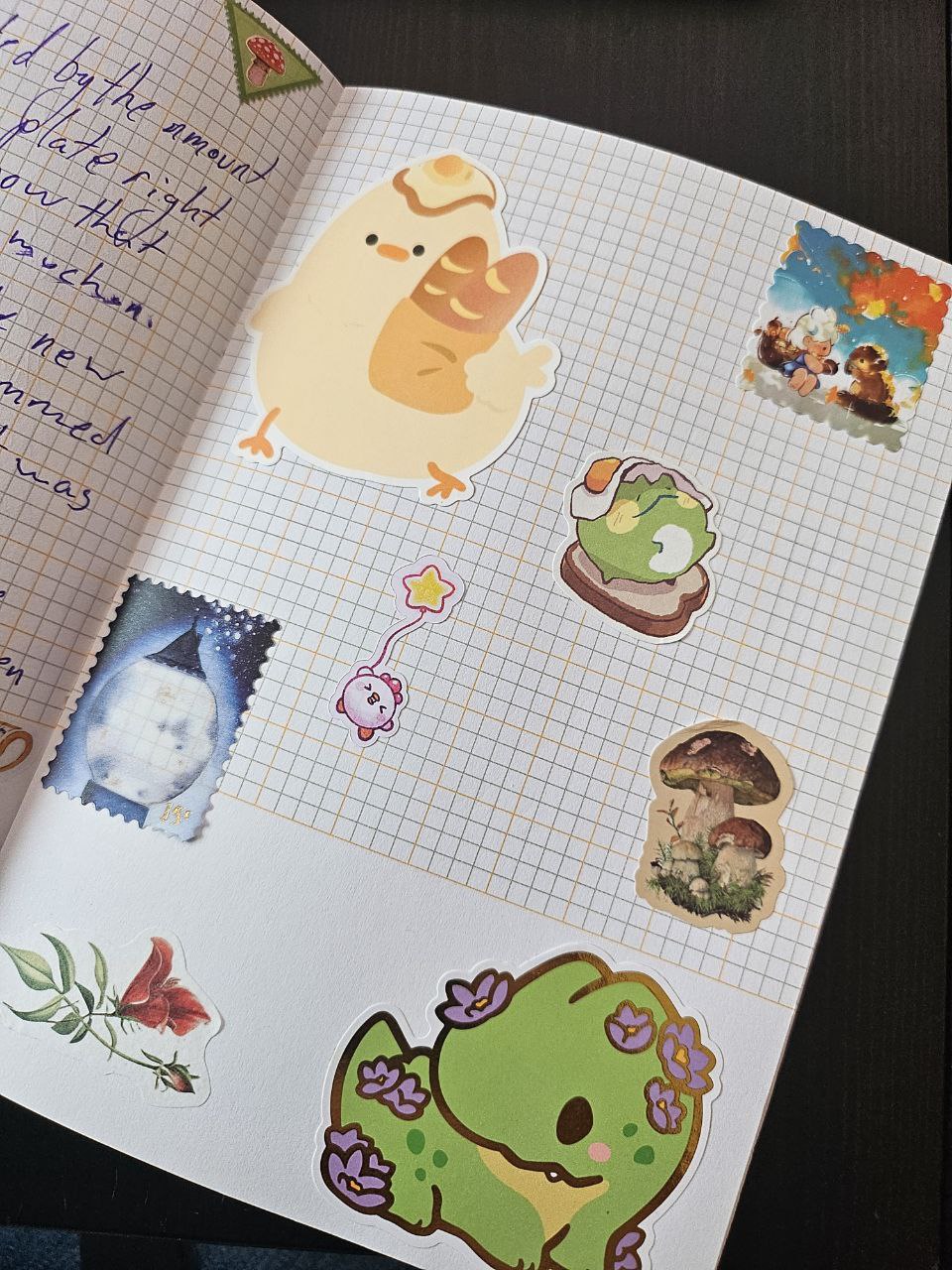
If it hasn’t been clear through all my examples, I do find that part of what made journaling fun for me was stickering up my pages. I used to be afraid to do it because the aesthetic journal layouts I saw online seemed so out of reach. But stickers are bountiful and can be placed literally wherever you want, aesthetic or otherwise. You need no greater reason to place a sticker on your journal page than the fact that you enjoy it being there.
All levity aside, adding fun color through low-barrier methods (i.e. stickers, highlighters, colored pen) can really help reduce any hesitation around journaling. I hope that some stickers – in combo with the strategies above – can help you also make sense of everything you have to do.

